Protein Shakes Explained
Everything you need to know about protein shakes
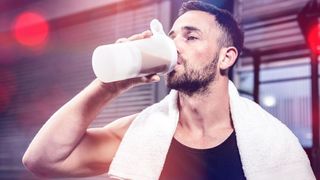
For many people a workout isn’t complete until they’ve gulped down a protein shake afterwards, but this wasn’t always the case. Protein-packed drinks were once only seen in the meaty clutches of bodybuilders, with regular gym types happy to stick with a banana and a tablespoon of peanut butter to fuel their muscle growth.
Today’s gym-goers have fully embraced the protein shake, but how many know exactly what is in the powder they chug down so merrily? For all the info on drinkable protein supplements we spoke to sports dietitian Gemma Sampson (dietitianwithoutborders.com).
For our tried-and-tested favorites, plus nutritional breakdowns, head over to Coach's guide to the best protein powders.
What is a protein shake?
The classic shake is a few spoonfuls of protein powder mixed with water or milk, but the increasing popularity of protein-packed liquids means that there are far more options available.
Most boutique gyms and studios will sell protein shakes or smoothies that are generally more delicious than a standard DIY shake, but can also contain high amounts of sugar if they throw in a load of fruit or chocolate.
You can also buy ready-made protein drinks in the supermarket nowadays, but again, you should make sure to check how much sugar they contain.
What is the point of protein shakes?
Shakes are simply a convenient way to increase your intake of protein, which is needed to support muscle growth and a host of other bodily functions.
Get the Coach Newsletter
Sign up for workout ideas, training advice, reviews of the latest gear and more.
“Protein plays an essential role in muscle growth, repair and normal function, forming enzymes and hormones, transmitting nerve impulses throughout the body and protecting immune function,” says Sampson.
“During exercise, stress placed on the body results in protein breakdown. Replacing protein after exercise allows muscles to rebuild and recover.”
What are the main types of protein used?
The two most common types of protein powder are whey and casein. Put in the simplest terms possible, whey is absorbed quickly and casein slowly. Whey is best for taking straight after a tough workout when you’re looking to provide your muscles with the fuel needed to start repairing and rebuilding themselves immediately, while casein can be taken before you go to bed to drip-feed amino acids into your muscles overnight. Many powders contain a mix of whey and casein protein to cover all your bases.
Whey itself comes in three main forms: concentrate, isolate and hydrolysed. Concentrate is the cheapest type, while isolate has the highest protein content and is absorbed faster than concentrate. Hydrolysed also has a high protein content and the protein has been partially broken down during the production process to make it the fastest absorbed type of all, but it is more expensive than concentrate or isolate whey. Many powders use a mix of all three.
Both whey and casein are sourced from milk, so if you’re vegan you’ll have to look elsewhere. Fortunately there are plenty of options that aren’t derived from animals to consider, with soy, hemp, pea and brown rice all commonly used. Generally, vegan protein powders use a mix of these to provide a complete protein, which is one that contains all nine of the essential amino acids we need, in varying amounts, in our diet. Soy is a complete protein, which is why it is the go-to option for many vegan powders, while a blend of rice and pea protein is another of the most common combos.
Is it better to get protein from food?
No matter what your aim is, protein shakes should always be used alongside a balanced diet, rather than to replace real food.
“It’s always better – and usually tastier – to get your protein from food,” says Sampson.
“But sometimes that’s just not possible – whether it’s the volume of food required to meet individual requirements or due to dietary restrictions. The more restrictive a diet becomes, such as with a milk allergy or a vegan diet, the harder it can be to meet protein requirements naturally through food, which is where supplements can be beneficial.
“The key thing to remember is the word ‘supplement’. They are meant to supplement a balanced diet – not replace it.”
How much protein should you eat when you’re aiming to build muscle?
Even if you are sedentary you should be eating 0.8-1g of protein per kg of bodyweight per day, and once you start working out with the aim of building muscle you need to increase that considerably.
“To build muscle, an overall daily protein intake of 1.4-2g protein per kg of bodyweight per day is recommended,” says Sampson.
“Higher protein intakes can be beneficial for certain sports, depending on the individual and their specific goals.”
Try to spread out your protein intake and remember that it’s not going to lift the weights for you.
“Aim to consume 25-40g of protein per meal every three to four hours over the day for the best results, rather than one or two bigger doses,” says Sampson.
“It’s important to highlight that muscle can also only grow in response to stress from resistance training. Protein alone without training won’t result in muscle gains.”
Are protein shakes good for weight loss?
A lot of protein supplements market themselves as weight loss aids, and while they certainly can help, it’s – as always – a little more complicated than that.
“They can play a role in aiding weight loss, but it depends in the context where they are being used,” says Sampson.
“Often you see them being marketed as a meal replacement, which isn’t necessarily a sustainable means to lose weight and keep it off.”
Protein has the effect of making you feel fuller for longer, which should mean that you’re less tempted to give in to snack cravings. But you need to remember that they do contain calories, so they’ll be adding to your overall intake.
“If the energy being consumed from a protein shake is above and beyond your normal energy needs, then your post-training shake could actually be hindering your weight loss efforts,” says Sampson.
When should you drink a protein shake? Is it imperative to take one within 30 minutes of a workout?
Unless you’re training multiple times a day, it’s probably not worth stressing yourself out about chucking down protein as soon as possible after a workout.
“If you’re training twice a day, getting protein, carbohydrates and adequate fluids in quickly is important to aid rapid recovery to get the most out of the second session of the day,” says Sampson.
“In this situation, eating within 30 minutes of exercise is critical.
“Most people, however, typically train once a day or less, so the recovery window becomes less important and it is usually possible to have a normal meal or snack afterwards.”
See related :
- 23 Protein Shake Recipes For A Tasty, Refreshing Treat
- The Best Vegan Protein Powders To Help Your Body Recover After A Workout
- Do You Really Need That Protein Shake? One Expert Doubts It
- Casein Protein Basics: What Is It, What Are The Benefits And What Are The Side Effects?
Should you have more than one protein shake a day?
If your training level demands a protein intake that’s tricky to get from food then it might be worth having more than one protein shake a day, but again, keep an eye on all the ingredients.
“If there is a real need to consume more protein that can’t be met by food alone, you can take more than one protein shake,” says Sampson.
“However, most commercial protein shakes these days are highly fortified with vitamins and minerals and multiple servings can easily exceed safe levels which may even lead to toxic levels being consumed.”
Are there any downsides to using protein shakes?
Perhaps the biggest downside of protein shakes going mainstream is that the gym is full of trouser trumpers. Other than that, there aren’t any considerable risks to using protein powders, but it’s important to keep a close eye on the sugar and fat content of your protein drinks, especially if you buy them ready-made.
“Supplements typically do contain a lot of added ingredients which may not always be necessary or desirable,” says Sampson.
“Artificial sweeteners are commonly used to add sweetness without carbohydrate, which can produce a laxative effect if consumed in high amounts and cause flatulence.”
Furthermore, elite athletes should keep a very close eye on the ingredient list of supplements.
“For elite athletes and those competing at a high level, it’s essential to be aware that supplements are a common culprit for inadvertent doping. Cross-contamination in manufacturing facilities can ruin sporting careers, so it’s advised to choose supplements tested through Informed Sport to minimise that risk.”
Are protein shakes worth it?
The biggest question of all. Is the average person actually going to benefit from protein shakes?
“The majority of people are able to get enough protein naturally from foods,” says Sampson.
“Protein shakes are great for convenience and can be useful in adding additional protein to the diet, particularly for vegan and vegetarians, but for most people they aren’t an essential part of your daily diet.”
The Best Protein Powders
We have tested a vast range of protein powders to home in on the very best available, and you can find reviews of everything we’ve tried in our protein powders round-up. However, if you just want the quick version, here are our top three protein powders.
Best Whey Protein Powder: Myprotein Pro THE Whey+
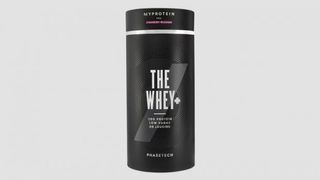
The key to a good protein powder is high-quality ingredients and only the best have been put into this powder. Whey isolate is delivered via Myprotein’s “beadlets”, which stagger the release into the body to ensure a steady supply of muscle-building amino acids. Each 32g serving contains 26g of protein and the powder mixes easily in water or milk.
Buy from Myprotein | £35.99 for 960g (currently reduced to £27.02)
Best Casein Protein Powder: Optimum Nutrition Gold Standard 100% Casein
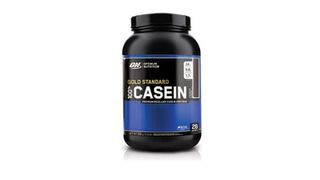
Here’s another powder that uses premium ingredients. In this case it’s micellar casein, which is absorbed slowly by the body over several hours, making this a great pick to drink just before bed. Each 32g serving contains 24g of protein.
Buy from Optimum Nutrition | £14.99 for 450g
Best Budget Protein Powder: Bulk Powders Pure Whey Protein
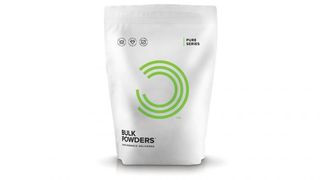
Even when you have to pay the full RRP of this powder it offers excellent value – but it’s also often found in sales, making it even more of a bargain. There’s a huge range of flavours, and each 30g serving contains at least 22g of protein (as much as 24.2g in the unflavoured variety). The whey used is concentrate, rather than the more refined kinds like isolate or hydrolysed that you get in more expensive powders, but if you want a shake that supports your efforts in the gym it will undoubtedly get the job done.
Buy from Bulk Powders | From £12.99 for 500g
Most Refreshing Protein Powder: Myprotein Clear Whey Isolate
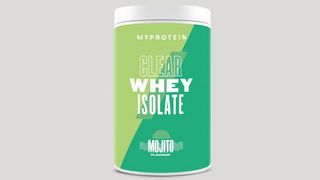
If you’re used to – but not that keen on – thick vanilla, chocolate and strawberry protein shakes this will be an absolute revelation, as it was for us when we first tried the Rainbow Candy flavour. The drink is light and refreshing, and all the flavours are designed to complement that summery vibe: there’s Peach Tea, Mojito, Bitter Lemon and Orange Mango alongside the Skittles-esque Rainbow Candy. The powder delivers on the nutritional side too, with each 25g serving containing 20g of protein from hydrolysed whey isolate.
Buy from MyProtein | £21.99 for 500g
Best Vegan Protein Powder: Healthspan Elite Complete Vegan Protein

Since whey and casein are both sourced from milk, vegans have to look elsewhere for their protein. This powder combines pea, pumpkin and brown rice to provide a complete protein source, and it also contains 100% of your recommended daily intake of vitamin B12. In each 27g serving you get 20g of protein.
Buy from Healthspan | £24.99 for 1kg

Nick Harris-Fry is a journalist who has been covering health and fitness since 2015. Nick is an avid runner, covering 70-110km a week, which gives him ample opportunity to test a wide range of running shoes and running gear. He is also the chief tester for fitness trackers and running watches, treadmills and exercise bikes, and workout headphones.
